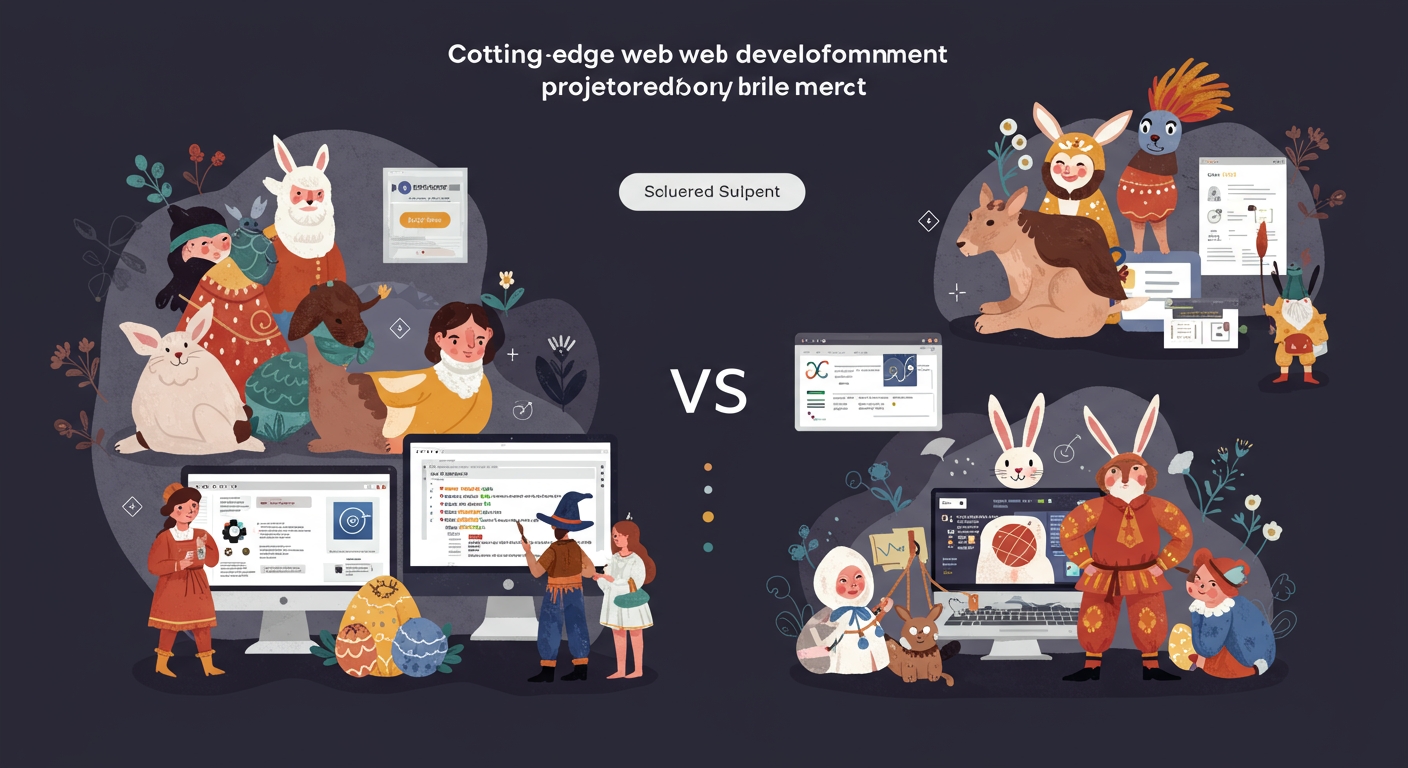Are you struggling to measure the success of your telematics software development? If so, you’re not alone. Many organizations investing in these technologies face difficulties in quantifying their returns and ensuring they’re on the right track. You need clear KPIs and an effective ROI model tailored to your telematics needs. How can you ensure your investments yield results? In this blog, we will explore essential strategies to develop and implement effective telematics software development, focusing on how you can better perceive the performance of your investments, and how to leverage these insights for greater operational efficiency and ROI.
KPIs for Telematics Software Development
Essential Metrics in Telematics Software Development
When it comes to telematics software development, identifying essential KPIs is paramount for success. KPIs are quantifiable measures that gauge the performance of various processes and initiatives. For telematics, here are some critical metrics to consider:
- User Engagement: This metric assesses how well users interact with your telematics application. High user engagement indicates a user-friendly interface and reliable functionalities that meet user needs.
- Data Accuracy: The precision of the data collected by telematics systems is crucial. Inaccurate data can lead to poor decision-making, reduced operational efficiency, and client dissatisfaction.
- System Uptime: This metric tracks the operational time of your telematics system compared to downtime. A high uptime percentage indicates reliability and can greatly influence customer satisfaction and retention.
By analyzing these essential KPIs, organizations can scrutinize their telematics software development process, ensuring that they are not only meeting business objectives but also enhancing user satisfaction.
Setting Realistic Goals for Telematics Software Development
Having robust KPIs is a critical first step, but simply setting them isn’t sufficient. To maximize your telematics software development efforts, it’s essential to establish realistic and measurable goals aligned with the broader business objectives. The SMART criteria—Specific, Measurable, Achievable, Relevant, and Time-bound—serve as a strong foundation for goal setting.
For instance, instead of vaguely stating, “”We want high user engagement,”” you could define a more concrete goal like, “”Increase user engagement by 25% within the next six months by launching new features based on user feedback.”” This clarity allows teams to focus their efforts, track progress efficiently, and make necessary adjustments along the way.
Telematics Software Development Migration Strategies
Steps for Successful Telematics Software Development Migration
Migrating your telematics systems can be a complex yet necessary process, especially when upgrading older systems to modern platforms, ensuring continued operational efficiency, and enhancing capabilities. Below are steps to follow for effective migration:
- Assessment: Begin by analyzing your current systems, identifying what needs to be migrated, and mapping out your migration strategy.
- Planning: Create a detailed plan that outlines timelines, resource allocation, and the specific tasks necessary to complete the migration.
- Testing: Before full deployment, conduct thorough testing to identify any bugs or issues within the new system environment. Controlled testing minimizes disruptions.
- Implementation: Rolled-out the migration in phases if possible. This staged approach limits disruptions and allows for adjustments based on real-time feedback.
- Monitoring: Post-migration, keep a close watch on KPIs such as user engagement and data accuracy to quickly identify any operational issues.
Challenges in Telematics Software Development Migration
Despite meticulous planning, challenges in telematics software development migration can arise. Common hurdles include:
- Data Loss: Risks of losing critical data can be a vital concern during the migration process. Establishing clear data backup protocols is essential.
- User Resistance: Some users may resist changes to the technology they are accustomed to. Clear communication about the benefits of the new system, training, and support can ease this transition.
- System Compatibility: New telematics solutions may not integrate seamlessly with existing infrastructure. Therefore, assessing compatibility during the planning phase is critical.
Solutions to overcome these challenges include engaging stakeholders early in the process, investing in thorough training, and working with a competent software development company with relevant expertise.
Return on Investment in Telematics Software Development
Calculating ROI for Telematics Software Development
Calculating the ROI for telematics software development is crucial for justifying the investment and understanding the financial implications over time. The basic formula for ROI is:
[ \text{ROI} = \frac{\text{Net Profit}}{\text{Total Investment}} \times 100 ]
Here are some important factors that influence ROI in telematics:
- Implementation Costs: These include expenses from software licenses, hardware, and workforce training. Accurate estimation of these costs is crucial before starting development.
- Operational Efficiency Gains: Your telematics application may help reduce costs by automating processes, improving fleet management, or reducing asset downtime. Establish metrics to quantify these savings.
- Customer Satisfaction: Enhancements in customer experience driven by telematics can lead to increased retention and customer acquisition, which directly impacts revenue.
Through careful analysis of these factors, organizations can gain a clearer picture of their ROI, helping them make more informed decisions regarding future telematics software investments.
Real-World Examples of ROI in Telematics Software Development
Several companies successfully demonstrate the positive impact of telematics software development on ROI. For example, a transportation company utilizing telematics saw a 15% reduction in fuel consumption within six months of deploying a new telematics system. This translated into substantial cost savings, funding future investments in modernization.
Another case involved a logistics firm that implemented telematics for real-time tracking of their fleet. The result was a dramatic decrease in delivery times and improved customer satisfaction. The financial analysis showed a return on investment of over 200% within the first year, illustrating how vital telematics software development can be for growth.
These case studies underscore the importance of not just investing in technology but understanding how it can drive ROI – giving firms a competitive edge in their respective markets.
The Role of Modernization in Telematics Software Development
Benefits of Modernizing Telematics Software Development
In the rapidly evolving tech landscape, modernization plays a significant role in ensuring your telematics software remains relevant and efficient. Some notable benefits of modernization include:
- Enhanced System Efficiency: Modernized platforms often utilize newer technologies that improve processing speed and data handling—leading to better overall user experiences.
- Improved Security: Upgrading your systems can enhance security measures, making them more resilient against cyber threats. This is crucial in protecting sensitive data that telematics systems handle.
- Greater Scalability: Modern solutions allow for easy scaling, enabling companies to adapt their telematics systems as the business grows and changes.
Investing time and resources into modernization not only bolsters current operations but prepares your telematics software for future demands and innovations.
Key Technologies for Modernization in Telematics Software Development
Numerous technologies are driving modernization in telematics software development. Some key examples include:
- Cloud Computing: Utilizing cloud infrastructure ensures flexibility in scaling resources and accessing data anywhere, making it an attractive choice for telematics projects.
- AI and Machine Learning: These technologies can analyze vast amounts of data generated by telematics devices, providing insights that can directly drive performance enhancements.
- IoT Integration: Leveraging Internet of Things (IoT) devices ensures real-time data collection and analytics, enhancing the effectiveness of telematics solutions.
By leveraging these key technologies, businesses can modernize their telematics software, ultimately enhancing their operational capabilities and keeping pace with industry advancements.
Finding the Right Software Development Company for Telematics
Criteria for Choosing a Software Development Company
Finding a suitable software development company is crucial for successfully undertaking your telematics software development project. Key factors to consider include:
- Expertise in Telematics Development: Look for companies with a proven track record in telematics projects. Their experience will directly influence project efficiency and quality.
- Technical Capabilities: Ensure that the company is up-to-date with the latest technologies and methodologies, including cloud computing, AI, and modern programming languages.
- Client Testimonials: Review case studies and testimonials from previous clients. Positive feedback is often a good indicator of a company’s ability to deliver quality results.
These criteria can help you in selecting a partner that aligns with your vision and goals.
Benefits of Partnering with an Expert Software Development Company
Collaborating with a refined software development company can amplify your telematics software development efforts. The advantages include:
- Access to Specialized Skills: Experienced firms often have a diverse team of professionals equipped with specialized skills needed for complex telematics projects.
- Efficient Project Management: Professional development companies employ methodologies like Agile that improve responsiveness and adaptability, ensuring smoother project execution.
- Long-Term Support and Maintenance: Working with a dedicated team can facilitate ongoing support and maintenance for your telematics applications, which is critical for sustained performance.
All these benefits showcase the value that partnerships with expert companies can bring to your telematics software development initiatives.
Mobile App Development for Telematics Software
Key Features in Mobile App Development for Telematics Software
As mobile applications increasingly play a vital role in telematics solutions, the integration of key features is essential. Some vital features include:
- Real-Time Monitoring: Users should be able to track vehicles and assets in real-time, enhancing responsiveness and efficiency.
- User-Friendly Interface: An intuitive user experience (UX) design fosters ease of use, allowing users to navigate the application effortlessly.
- Data Visualization Tools: Effective data display through dashboards helps users quickly interpret complex information, driving informed decision-making.
Incorporating these features can significantly augment the value of telematics applications, boosting user satisfaction and utilization rates.
The Future of Mobile App Development in Telematics Software
The mobile app development landscape for telematics software is evolving, shaped by emerging trends and technologies. Some trends to watch include:
- Increased Use of AI: AI-powered features such as predictive analytics can enhance decision-making by forecasting trends and potential issues in telematics data.
- Enhanced Integration with IoT: Future mobile apps will increasingly leverage IoT data, creating a more interconnected system that can provide deeper insights and capabilities.
- Focus on User-Centric Design: As user expectations rise, a greater emphasis on tailored experiences will drive app development, leading to higher user satisfaction.
As these trends unfold, companies that adapt their telematics software with cutting-edge technologies and designs will undoubtedly find themselves ahead of their competitors.
Conclusion
In conclusion, understanding the essential KPIs and ROI models for telematics software development is crucial for maximizing your investment. By setting realistic goals and adopting sound modernization strategies, you can enhance your operational capabilities and ensure your telematics software is not only functional but also competitive. Partnering with a trusted software development company, like Wildnet Edge, an AI-first leader in telematics solutions, can provide the expertise you need to achieve these outcomes. As you reflect on the insights gained from this article, consider taking actionable steps toward optimizing your telematics efforts, ensuring that your organization is poised for ongoing success.
FAQs
Key performance indicators include user engagement, system accuracy, and operational uptime.
Identify common challenges and apply strategic solutions to minimize disruption.
Factors include implementation costs, efficiency gains, and improved customer satisfaction.
Modernization enhances efficiency, incorporates new technologies, and meets evolving user needs.
A specialized app development company can create intuitive applications that improve user engagement and data accessibility.

Nitin Agarwal is a veteran in custom software development. He is fascinated by how software can turn ideas into real-world solutions. With extensive experience designing scalable and efficient systems, he focuses on creating software that delivers tangible results. Nitin enjoys exploring emerging technologies, taking on challenging projects, and mentoring teams to bring ideas to life. He believes that good software is not just about code; it’s about understanding problems and creating value for users. For him, great software combines thoughtful design, clever engineering, and a clear understanding of the problems it’s meant to solve.
 sales@wildnetedge.com
sales@wildnetedge.com +1 (212) 901 8616
+1 (212) 901 8616 +1 (437) 225-7733
+1 (437) 225-7733































